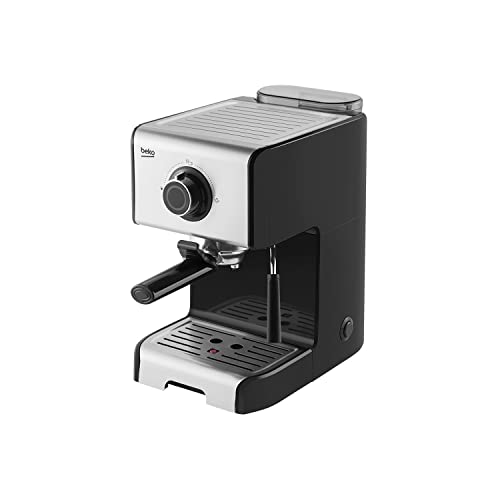How to Make Espresso Machine Coffee
Espresso machines can make an amazing cup of coffee, however they require more care and setup than a typical coffee maker. You'll also need to grind and tamp the beans by yourself.
The secret to making espresso is pressure. How an espresso machine works is that the heating vessel heats the water to a perfect temperature, then forces it out of the spouts and through the grounds.
Temperature
Espresso is created by forcing hot water under pressure through finely ground coffee. The temperature of the water is vital to the quality of the final shot. Temperatures that are too low can result in a absence of flavor compounds. High temperatures produce over extraction and can lead to burning or bitter taste.
The ideal temperature range for espresso is between 195 and 205 degF. This temperature is achieved using a group head that is designed to keep the stability of temperature and maintain a constant temperature throughout the brewing process. espresso machine uk sought-after type of group head is the E61 that offers the stability of temperature and pre-infusion capability, as well as lever control.
It is crucial to consider the temperature when you adjust your espresso machine for different roasts or brew ratios. This will impact the extraction yield as well as the crema. The ideal temperature will differ according to the bean and roast. However the general rule is that lighter roasts with higher brew speeds require higher temperatures. A high-quality thermocouple is important to ensure a constant temperature.
Pressure
During the brewing process espresso machine coffee is pushed through finely ground and tamped coffee grounds. This triggers chemical reactions that extract flavors, oils, and other soluble components. The drink that is produced is typically richer and more flavorful.
The ideal espresso machine pressure is nine bar of pressure, which is the same as atmospheric pressure at sea level. The soluble components in the espresso bean can be best extracted at this pressure.
Some espresso machines boast up to 20 bars of pressure. While these machines may achieve these levels of pressure but they might not be in a position to maintain the pressure during the extraction.
To put that into perspective To put it in perspective, one bar of pressure equals 32 pounds per square inch, or PSI, of the tire of a car. It's also four times the amount of pressure a professional cyclist uses when filling their bicycle tires. Every serious home barista needs to be able to control the pressure of their espresso machine and make consistent espressos.
Water

The water you use to make espresso is one of the most crucial aspects of a great cup of coffee. The right water will allow your beans to reach their full potential, while the wrong water could cause problems like clogged pipes or even harm your expensive espresso machine.
For the best espresso extraction it is recommended to choose an organic spring with a high mineral content. This water will enhance the flavor of your coffee without the chalky mineral traces you get from tap or bottled waters. This is an excellent alternative to distillation or reverse osmosis filtered water, which may be too pure and cause flavor issues.
You should not utilize a water filtration device that removes too much mineral content from your tap water. This can cause flavor and extraction issues. The best option is to buy a water test kit which will give you the water hardness in your area. This can then be used to identify the right filtration system to provide you with the right water requirements for your espresso machine.
Beans
Many coffee enthusiasts be very involved in the entire process of making espresso. They obsess over a variety of variables, such as temperature, water pressure and viscosity. If one of these variables is off even slightly it could make the entire drink taste bad.
The beans used are the most important factor when it comes down to espresso. Many believe that only certain varieties are suitable for espresso. While some beans are better designed for specific uses however, any bean that has been roasted can be used to make espresso. The main difference between espresso beans and regular coffee beans is that espresso beans are roasted for longer by tipycally extending past the second crack that gives them a darker appearance and makes them more soluble in water.
The best espresso beans tend to be medium or dark roasted, which gives the shots their characteristic richness and boldness. Light roasted beans can also be used to create great espresso, particularly when they are ground prior to use to make it easier to use an espresso maker.
Milk
Espresso and milk is a classic combination. The combination of espresso and milk is an iconic. Not only does it increase energy levels but it also balances the bitterness of the espresso. This is among the best pairings for a meal!
When selecting an espresso maker capable of making latte or the cappuccino as well you need to think about how easy it is to use. Many of the best machines come with a jug of hot or cold milk as well as steam wand. They also come with a portafilter to pull the shot. Some models include a built in grinder, tamper and frother.
The steam wand should be cleaned prior to making use of it for the first time each day (or after every cup of espresso) to remove any condensed water. The process takes only 30 seconds, but it's essential to keep your machine running smoothly. Failure to purge can cause an unpleasant taste or the build-up of bacteria that may alter the taste and smell of your drinks. It's easy to perform and should be a part of your regular maintenance routine.
